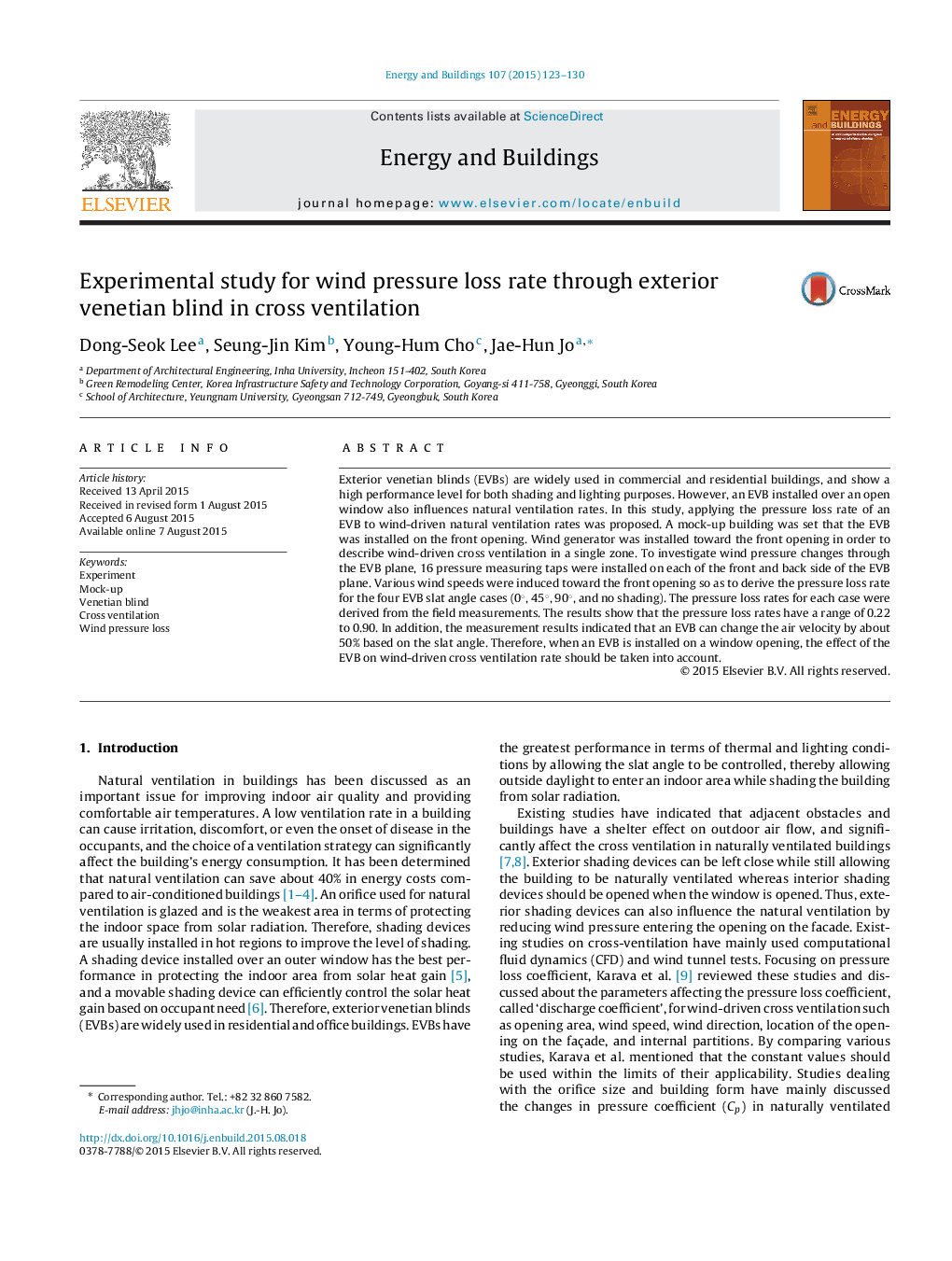| Article ID | Journal | Published Year | Pages | File Type |
|---|---|---|---|---|
| 262333 | Energy and Buildings | 2015 | 8 Pages |
•Experimental study in a mock-up building for deriving pressure changes according to the exterior venetian blind (EVB) in wind-driven cross ventilation.•Wind pressure loss rates were derived according to the EVB slat angles (0°, 45°, 90°, and no shading) in wind-driven cross ventilation.•The result showed that wind velocity entering the opening can differ up to 53% depending on the EVB slat angles.
Exterior venetian blinds (EVBs) are widely used in commercial and residential buildings, and show a high performance level for both shading and lighting purposes. However, an EVB installed over an open window also influences natural ventilation rates. In this study, applying the pressure loss rate of an EVB to wind-driven natural ventilation rates was proposed. A mock-up building was set that the EVB was installed on the front opening. Wind generator was installed toward the front opening in order to describe wind-driven cross ventilation in a single zone. To investigate wind pressure changes through the EVB plane, 16 pressure measuring taps were installed on each of the front and back side of the EVB plane. Various wind speeds were induced toward the front opening so as to derive the pressure loss rate for the four EVB slat angle cases (0°, 45°, 90°, and no shading). The pressure loss rates for each case were derived from the field measurements. The results show that the pressure loss rates have a range of 0.22 to 0.90. In addition, the measurement results indicated that an EVB can change the air velocity by about 50% based on the slat angle. Therefore, when an EVB is installed on a window opening, the effect of the EVB on wind-driven cross ventilation rate should be taken into account.
